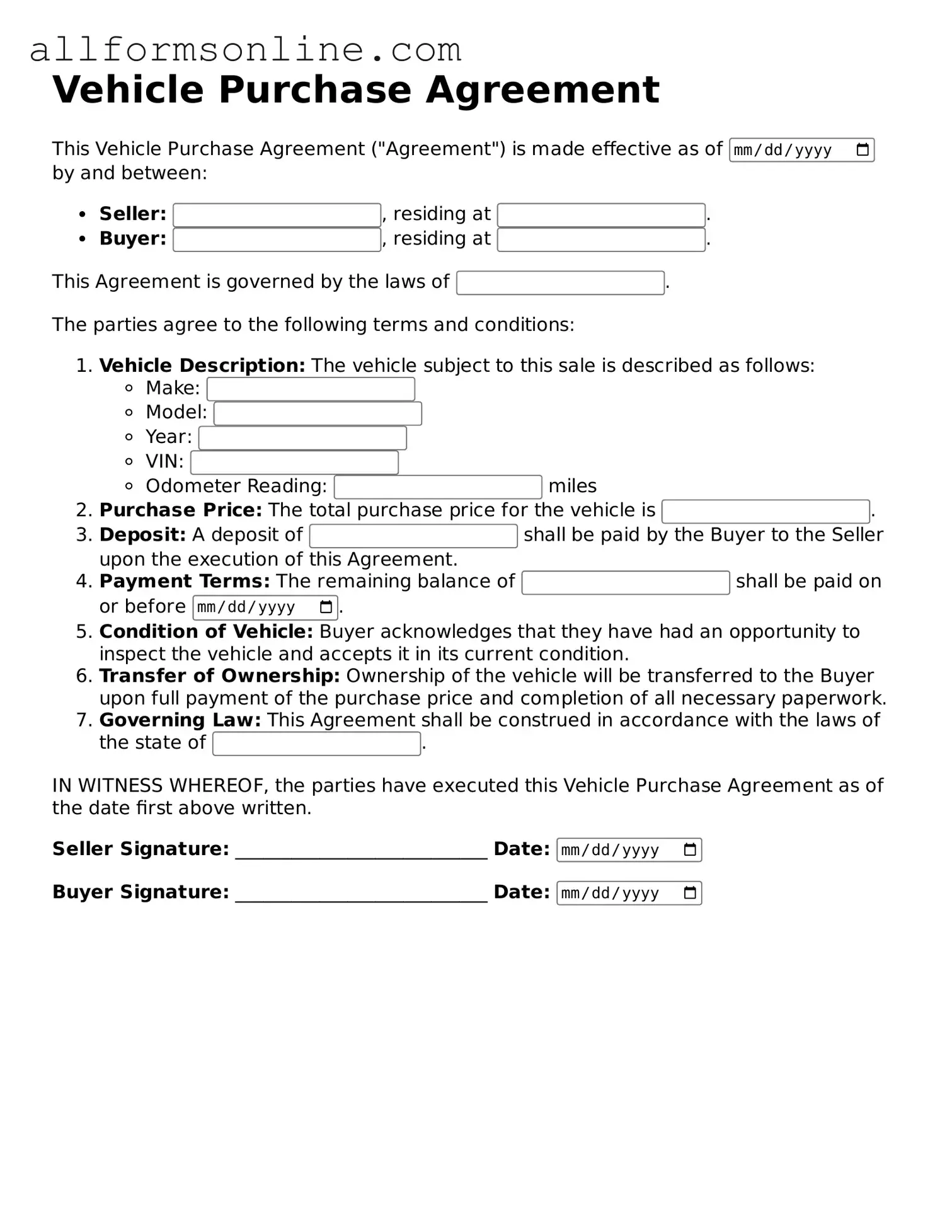What is a Vehicle Purchase Agreement?
A Vehicle Purchase Agreement is a legal document that outlines the terms and conditions of the sale of a vehicle between a buyer and a seller. It includes details such as the vehicle's make, model, year, VIN, purchase price, and any warranties or guarantees associated with the sale. This agreement protects both parties by clarifying their rights and responsibilities.
Why is a Vehicle Purchase Agreement important?
This agreement is crucial because it serves as a record of the transaction. It helps prevent misunderstandings and disputes by clearly defining what each party agrees to. In the event of a disagreement, this document can be referenced to resolve issues related to the sale.
What information should be included in the Vehicle Purchase Agreement?
Essential information includes the buyer's and seller's names and contact details, vehicle specifications (make, model, year, VIN), sale price, payment terms, and any additional conditions or contingencies. If applicable, include details about warranties or service agreements as well.
Do I need to have the Vehicle Purchase Agreement notarized?
Notarization is not typically required for a Vehicle Purchase Agreement, but it can add an extra layer of authenticity. Some states may have specific requirements, so it's wise to check local laws to ensure compliance.
Can I use a Vehicle Purchase Agreement for both new and used vehicles?
Yes, a Vehicle Purchase Agreement can be used for both new and used vehicles. Regardless of the vehicle's age, the agreement should detail the sale terms to protect both the buyer and seller.
What happens if one party does not fulfill their obligations under the agreement?
If one party fails to meet their obligations, the other party may have legal grounds to seek remedies. This could involve pursuing damages or enforcing the terms of the agreement in court. It's advisable to consult with a legal professional if disputes arise.
Where can I obtain a Vehicle Purchase Agreement template?
Templates for Vehicle Purchase Agreements can be found online through legal websites, automotive associations, or local government resources. Ensure that any template used complies with your state’s laws and includes all necessary information for your specific transaction.
